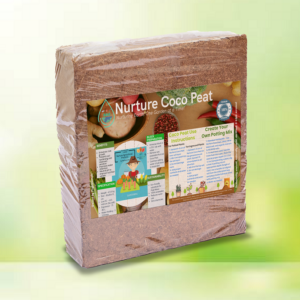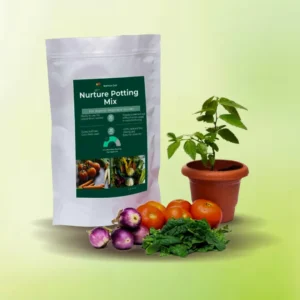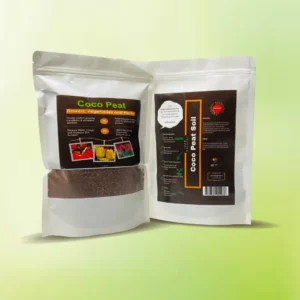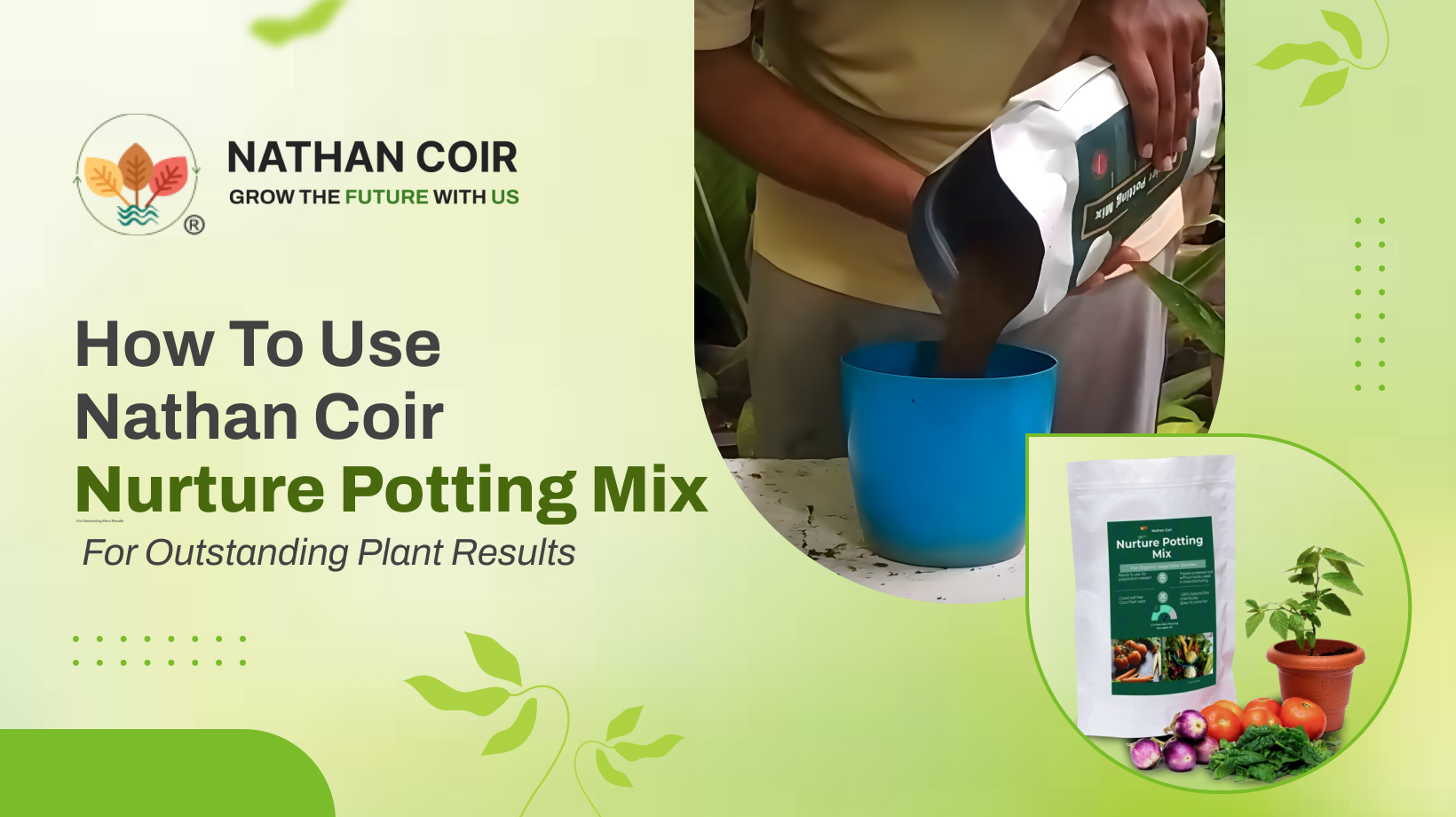Choosing the right nurture potting soil mix is crucial for the optimal growth of your vegetable and flower plants. With the right guidance, you can ensure your plants thrive and produce bountiful harvests and vibrant blooms. This guide will walk you through everything you need to know about potting soils and mixes, from understanding their components to planting and maintaining your garden.
How to use Nathan Coir Dry Nurture Potting Soil Mix to Grow Plants
Step 1:
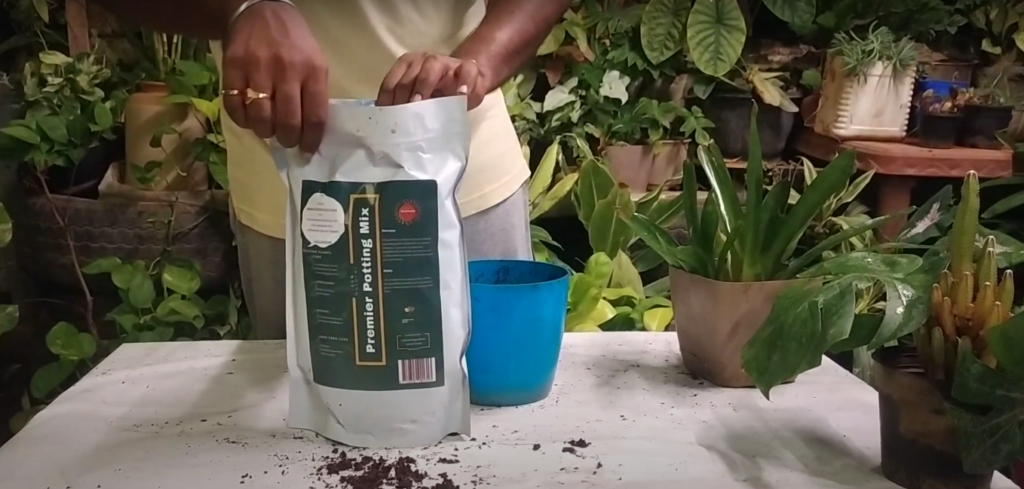
Carefully unsealing the Nurture Potting Mix package into a spacious mixing basin.
Step 2:
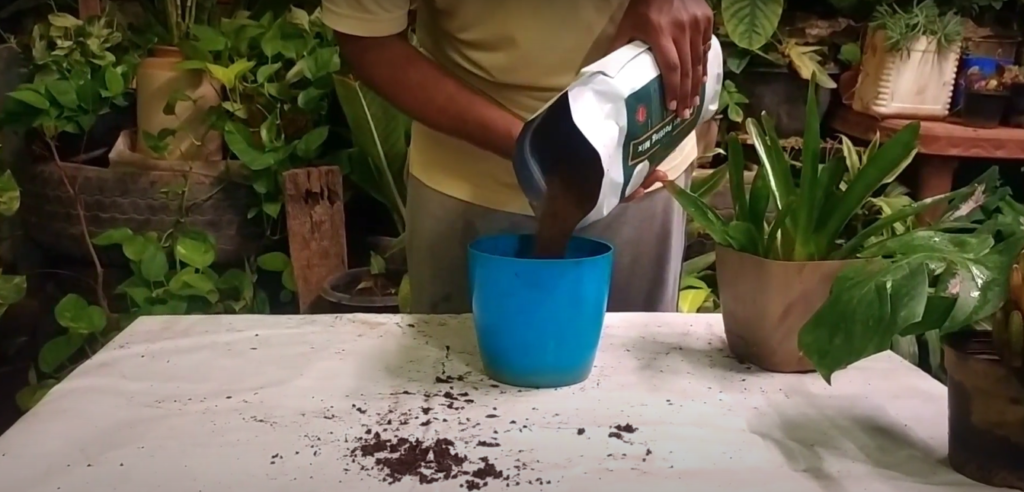
Add Nurture Potting Mix Soil in the pot for optimal plant growth.
Step 3:
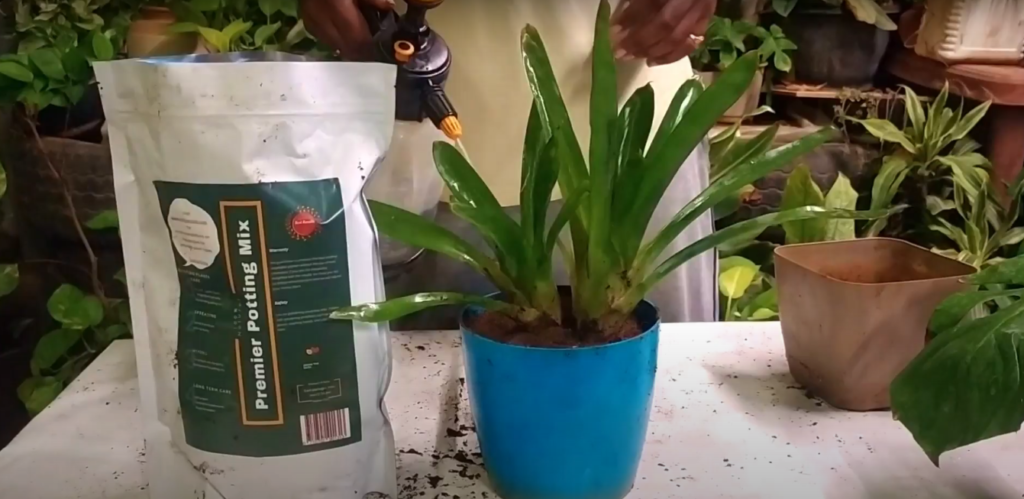
Add a limit of water, depending on the amount of soil required to fill the pot.
Step 4:
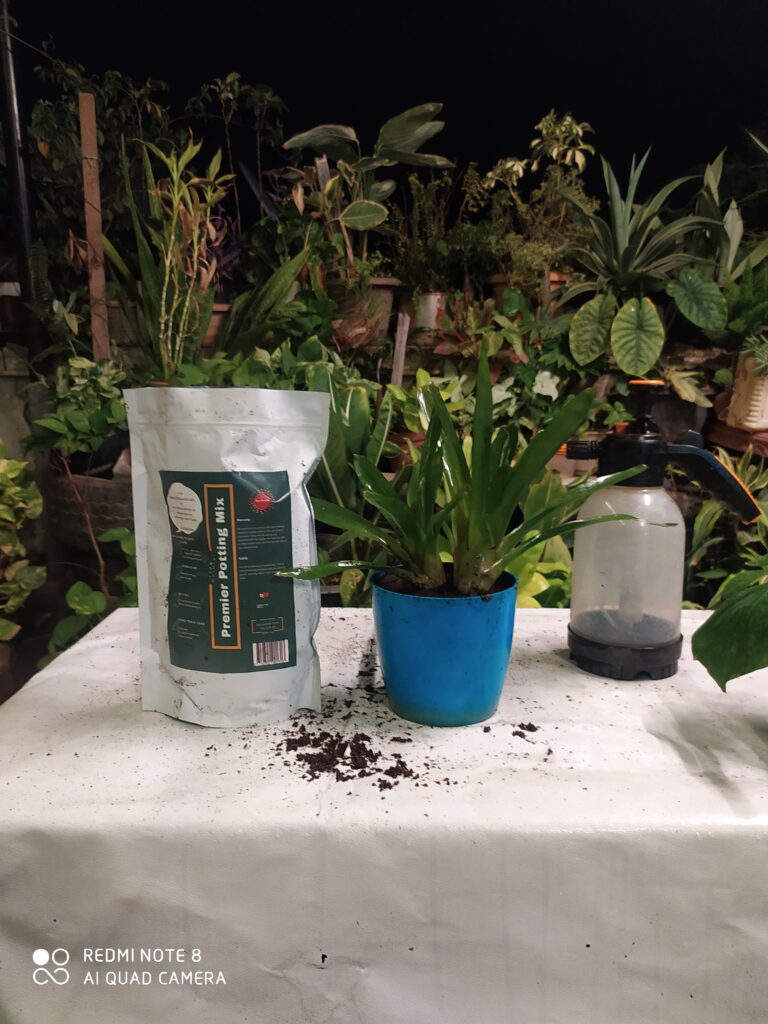
Use Nurture Potting Mix Soil easily in your home garden with this simple guide.
Understanding Potting Soils and Mixes
What is Potting Soil?
Potting soil is a medium specifically formulated to support the growth of plants in containers. Unlike garden soil, which is dense and can compact easily, potting soil is light and airy, promoting better root development. It typically contains a mix of organic materials like peat moss, bark, and compost, as well as inorganic substances like perlite and vermiculite, which enhance aeration and drainage.
Types of Potting Soils:
There are various types of potting soils designed to meet the needs of different plants. Standard potting soil works well for most plants, but you may find specialised mixes for specific needs, such as organic potting soil, which contains no synthetic chemicals, or cactus and succulent mixes, which provide excellent drainage.
Key Ingredients in Potting Mixes:
- Cocopeat: Made from coconut husks, cocopeat retains moisture well and provides organic matter.
- clean sand: does not contain pests. Provides the necessary support for larger plants
- Compost: Adds nutrients and beneficial microorganisms.
Understanding these ingredients will help you select the best potting mix for your plants, ensuring they receive the right balance of nutrients, moisture, and air.
Choosing the Right Nurture Potting Soil for Vegetables
Characteristics of Good Vegetable Potting Soil:
When growing vegetables in containers, it’s essential to choose a potting mix that is rich in nutrients, well-draining, and has good aeration. Vegetables need a steady supply of nutrients to produce healthy fruits and leaves. Look for mixes that include compost or other organic matter to provide these nutrients.
Recommended Potting Mixes for Common Vegetables:
Different vegetables have different needs, so it’s beneficial to tailor your potting mix accordingly:
- Tomatoes and Peppers: Require a nutrient-rich mix with good drainage. Consider adding compost or a slow-release fertilizer.
- Leafy Greens: Prefer a mix that retains moisture but also drains well to prevent waterlogging.
- Root Vegetables: Need loose, well-draining soil to allow roots to expand. A mix with added sand can be beneficial.
By selecting the appropriate mix for each type of vegetable, you can create an optimal growing environment that promotes healthy growth and abundant yields.
Choosing the Right Nurture Potting Soil for Flower Plants
Characteristics of Good Flower Potting Soil :
Flowering plants often require soil that balances moisture retention with adequate drainage. Nutrient content is also crucial, as vibrant blooms depend on a steady supply of essential minerals.
Recommended Potting Mixes for Common Flower Plants:
Whether you are growing annuals, perennials, or flowering shrubs, each type of flower has specific soil needs:
- Annuals: Generally thrive in standard potting soil with added compost for nutrients.
- Perennials: Often prefer slightly heavier soils that retain moisture longer.
- Indoor vs. Outdoor Flowers: Indoor flowers may need a mix that drains well to prevent root rot, while outdoor flowers might benefit from a richer, more moisture-retentive mix.
Choosing the right potting soil for your flowers will ensure they have the necessary conditions to bloom beautifully and consistently.
Maintenance and Troubleshooting
Monitoring Soil Health:
Regularly check the health of your soil by observing your plants’ growth and checking for any signs of nutrient deficiencies or excesses. Healthy soil will support robust plant growth, while poor soil conditions can lead to problems.
Common Problems and Solutions:
- Overwatering and Underwatering: Ensure consistent watering practices, adjusting based on plant needs and weather conditions.
- Nutrient Deficiencies: Address with appropriate fertilizers or soil amendments.
- Pests and Diseases: Use organic or chemical treatments as necessary, and practise good sanitation to prevent spread.
By staying vigilant and addressing issues promptly, you can maintain a healthy and productive container garden.
Conclusion
Creating the perfect environment for your plants begins with the right potting soil and mix. Understanding soil components, preparing containers, and effective planting techniques are key. For high-quality, affordable potting soil mixes, consider Nathan Coir. Our products support optimal plant growth for vegetables and flowers and are available on our website, Amazon, Flipkart, and Meesho. Enhance your garden with Nathan Coir’s superior potting mixes. Visit our site or online retailers and watch your garden thrive!

